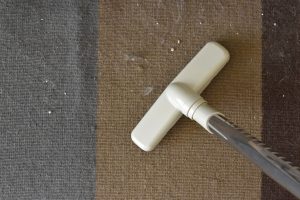Got a new kitty? Staring at the pet aisle, bewildered by the seemingly endless cat litter choices? Asking yourself "How long does cat litter typically last"? If this resonates with you, welcome aboard.
This article promises to guide you through cat litter choices, their lifespan, and how the number of cats in your household affects these timelines.
We will explore various types of cat litter, like clumping, non-clumping, silica crystal, and plant-based, and explore how long each type can last.
We'll also dig deeper to provide insights into how the number of your furry pals in your home impacts these timelines. Plus, you'll find tips to maximize the duration of your chosen litter and tricks to combat that dreaded ammonia smell.
However, we're just scratching the surface here. Hold on to your curiosity as we navigate through this cat litter conundrum.
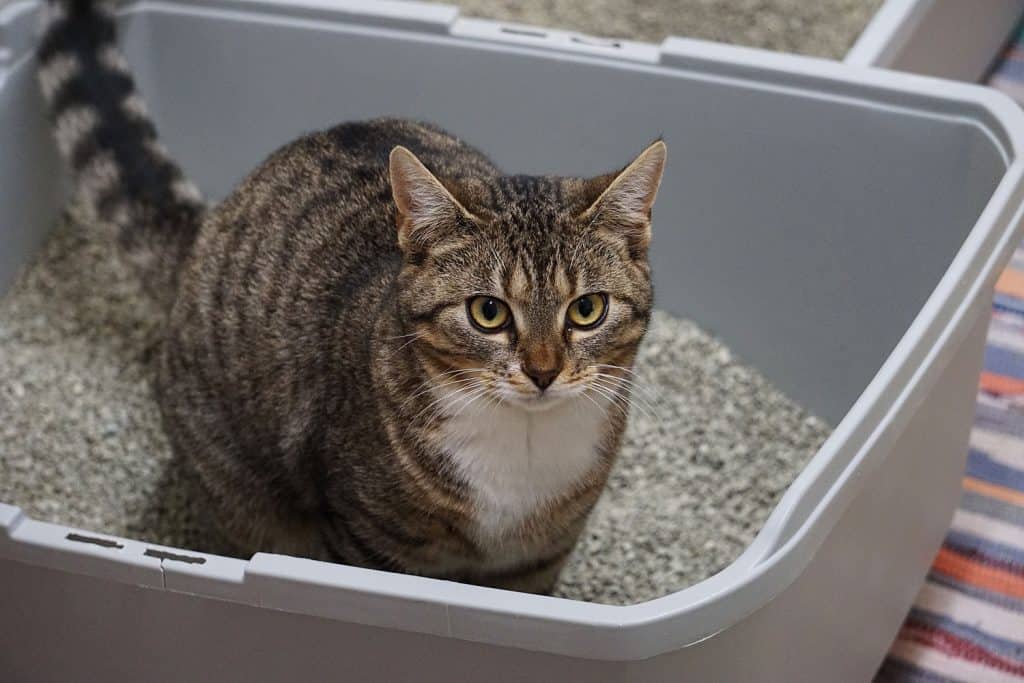
How Long Does Cat Litter Typically Last? A Comprehensive Guide
If you're a new cat owner, standing in the pet aisle pondering the various cat litter options, you're likely wondering, "How long does each type of cat litter typically last?"
The duration of cat litter depends on the type you choose. Here are the general timelines for each:
- Clumping cat litter: Typically lasts about a month.
- Non-clumping cat litter: Usually lasts around one week.
- Silica crystals cat litter: Can range from one week to one month.
- Plant-based cat litter: Offers an extended lifespan of up to 7 weeks.
These estimates are based on a one-cat household with regular litter scooping.
Now you know how long you can expect each type of litter to last, but keep reading as we elaborate on this further. We'll discuss how long each will last if you have more than one cat in your home.
Additionally, we'll answer some other questions you might have about cat litter and changing it out.
How Much Cat Litter You Will Use By Number Of Cats
As with most things in life, there are a lot of variables that can affect how much cat litter you will use. How frequently your cat uses the litter, whether you have multiple cats, and the type of cat litter you choose, will all play a part.
Clumping Cat Litter
Unlike non-clumping cat litter, clumping cat litter doesn't have to be emptied every time you clean it. You will use a lot less of this litter than non-clumping.
Typically, one cat will go through approximately 40 lbs of this litter a month. However, it could easily be less or more depending on the size of your cat and how often it uses the litter box.
Non-Clumping Cat Litter
Because this litter has to be changed frequently, you can expect to go through at least 64 lbs of this cat litter a month.
This is why this litter is often not ideal for a multicat household. Adding another cat will drastically increase the amount of litter you will need.
Silica Crystals Cat Litter
This will vary depending on the brand you use, but let's talk about Little Pearls Micro Crystals cat litter. We chose this particular brand because it lists on the packaging exactly how long you can expect the bag to last.
This product claims a large 10.5lb bag of crystal litter will last three months with a single cat. It also claims one bag of 10.5lb crystal litter is equivalent to 70 lbs of clay litter.
Click Here To See Litter Pearls Crystal Cat Litter On Amazon
Plant-Based Cat Litter
This one is a little trickier to give an amount because there are so many types of plant-based cat litter. One user who chimed in on a thread asking how much litter they use a month said she uses over 100 lbs a month.
However, she has four cats. Another site estimates 120lbs of plant-based cat litter will be needed a month. It varies wildly, but for an answer, it is approximately 100 lbs.
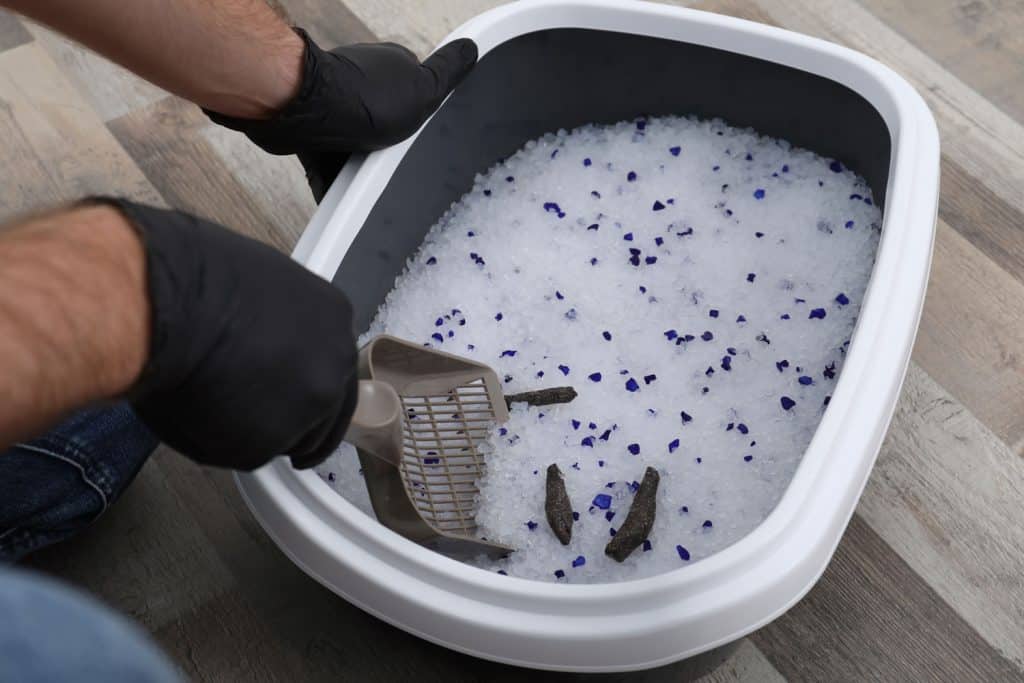
How Often Should You Completely Change Out Cat Litter?
If you have more than one cat in your home, the cat litter will be used a lot more frequently. This will decrease the amount of time you can expect your cat litter to last.
So let's look at how often you should completely change out your cat litter if you have a home with one or more cats.
Clumping Cat Litter
One of the attractive qualities of clumping cat litter is that you can scoop out the clumps when needed and not have to change out the entire litter box as often.
With one cat in the household and regular scoopings, your cat litter can last up to a month. If you have two cats, you can expect to change it completely every two to three weeks.
Non-Clumping Cat Litter
Non-clumping cat litter is not a good choice if you want to change your cat's litter box as little as possible. This type of litter needs to be changed once a week or twice, depending on the cat.
If you have more than one cat, you will need to choose a non-clumping cat litter designed for a multicat household, and even then, it will need to be changed daily or every other day.
Silica Crystals Cat Litter
This is one of the longest-lasting cat litter. A tray can last up to a month if you only have one cat. If you have two cats, you can expect it to last approximately two weeks.
Plant-Based Cat Litter
The ultimate lasting cat litter is plant-based. It's also natural and earth-friendly, which is an added bonus. Plant-based cat litter can last up to 7 weeks in a single cat household.
For multiple cats, it will typically last around three weeks. Some brands state it can last 33 days in a multicat home, but you might start noticing an ammonia smell before then.
How Do You Make Cat Litter Last Longer?
Having to change out your cat litter frequently can become pricey. So here are some tips to help you get the most bang for your buck and make your litter last longer.
Scoop More Often With A Slotted Scoop
One of the best ways to make cat litter last long is by scooping as often as you can. Removing the cat's waste quickly stops it from being absorbed as much.
If you use a slotted scoop, you can be sure you are not scooping out more litter than necessary. Of course, this doesn't work for non-clumping litter, but it'll help if clumping cat litter is your choice.
Click Here To See Slotted Scoop On Amazon
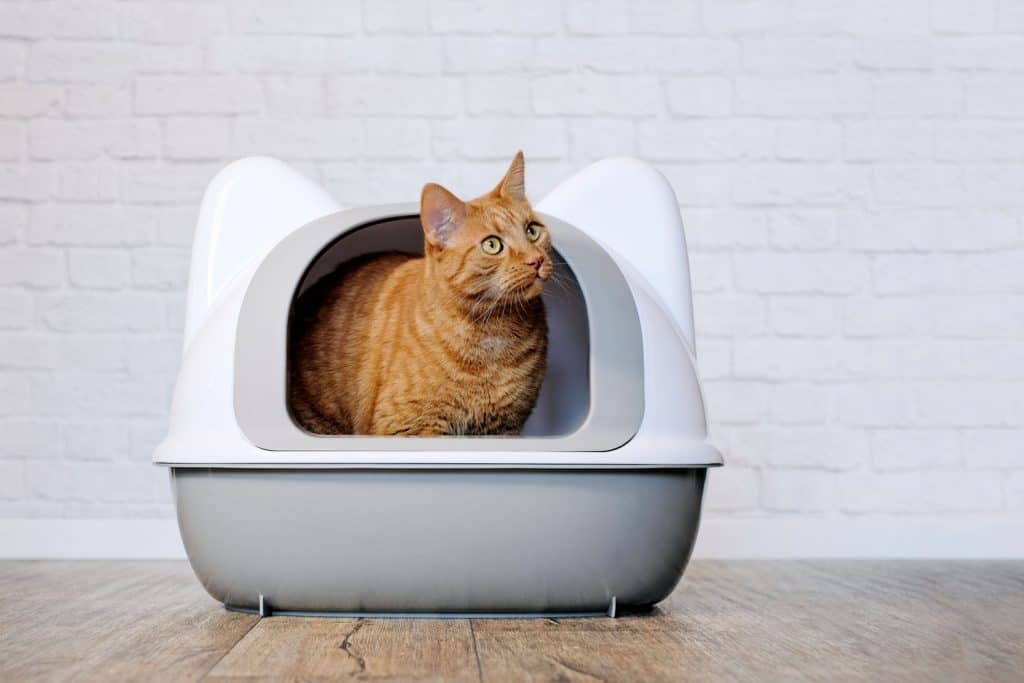
Use A Higher Sided Box
If you have a cat that likes to kick the litter after it has done its business, a higher-sided litter box might be able to keep more of the litter inside the box and less on your floor.
You could also keep a small dustpan and brush next to the box so you can sweep it back in.
Invest In A Self Cleaning Litter Box
Though this might seem like a pricey investment, it can save you a lot of money in the long run. Automatic litter boxes regularly sweep through the litter and can often be set to scoop at a chosen time interval (for example, every 15 minutes).
Non-automatic ones sift away the clean litter. You don't have to worry about scooping, and it makes sure litter isn't wasted.
Click Here To See Self Cleaning Litter Box On Amazon
Control Odor
Often, the odor is the reason you feel most inclined to change out the kitty litter. The smell of ammonia from the cat urine can become overwhelming.
Choose a well-ventilated spot for your litter box, and don't be afraid to sprinkle a little baking soda in the litter to help with the smell.
What Happens When You Don't Change Out The Litter?
If you don't change out the litter, you're not only going to have an awful smelling room; you can cause several issues for your cats. Not changing the cat litter can cause your cat to find somewhere else in your home to do its business.
This could include that pile of laundry in the corner of your room. It can also cause UTIs and bladder and kidney problems for your cat.
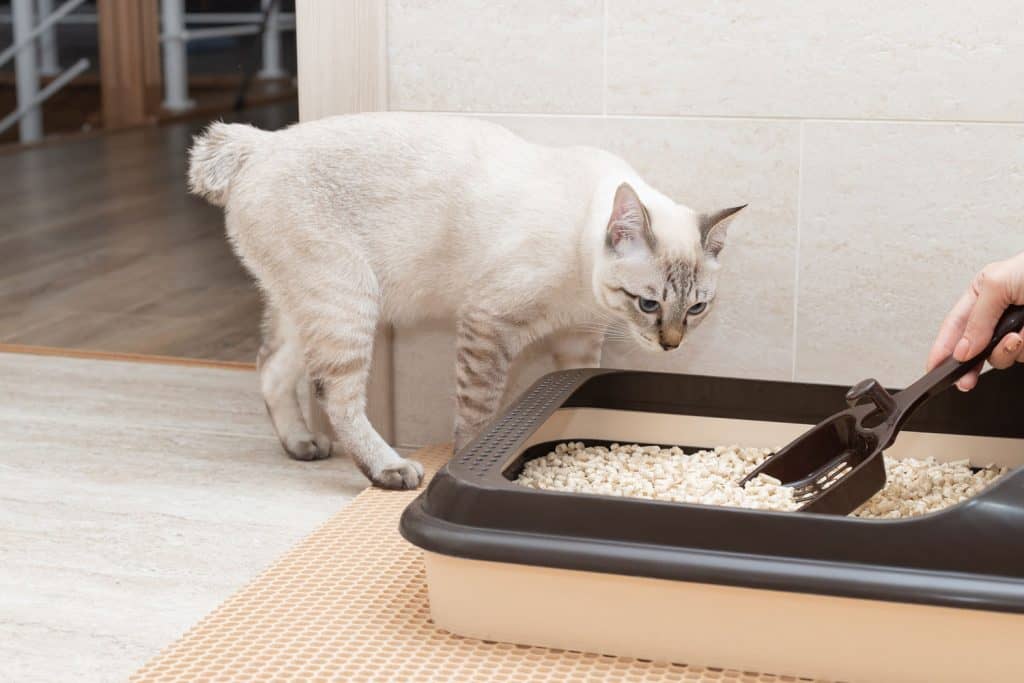
What Can You Use When You Run Out Of Cat Litter?
If you've found yourself in a bind and you can't run to the store, there are some other litter alternatives you can turn to. An option you are likely to have on hand is junk mail or newspapers.
You can shred any old mail or paper that might be lying around and place it in your litter box.
Some other alternatives include potting soil or sand. If you have a workshop, wood chippings or sawdust can also work. Finally, if you own chickens, their feed can also be used inside your litter box.
It's important to remember that every cat is different, and there is a possibility your cat won't like the change. Try to get your usual litter as quickly as possible.
Final Thoughts: Understanding Cat Litter Lifespan and Usage
As we reach the conclusion of this article, we hope that you now have a clear understanding of the typical lifespan of cat litter and can make informed choices.
It's important to remember that the estimated timelines provided are general guidelines, and your experience may vary depending on factors such as the size and number of cats in your household.
Remember, cat litter lifespan is influenced by various factors, and it's essential to find the right balance that works for you and your feline companion. Regularly evaluate your cat's litter box habits and adjust as needed to maintain a clean and comfortable environment.
By implementing these strategies and being attentive to your cat's needs, you can ensure a satisfactory litter experience and a harmonious relationship between you and your furry friend.
For more reading, check out some of our other blog posts on the topic here:
Can You Scoop Non-Clumping Litter?
Does Clumping Litter Last Longer?
![Woman shoving away cat litter from the litter box, How Long Does Cat Litter Typically Last? [By Number Of Cats and Type of Litter]](https://litter-boxes.com/wp-content/uploads/2021/12/How-Long-Does-Cat-Litter-Typically-Last-By-Number-Of-Cats-and-Type-of-Litter-683x1024.png)




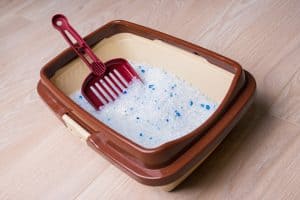
![cat examines kitty litter box with eco-friendly silicate litter - Can You Wash and Reuse Crystal Cat Litter? [Answered]](https://litter-boxes.com/wp-content/uploads/2023/08/cat-examines-kitty-litter-box-with-eco-friendly-silicate-litter-300x200.jpg)
